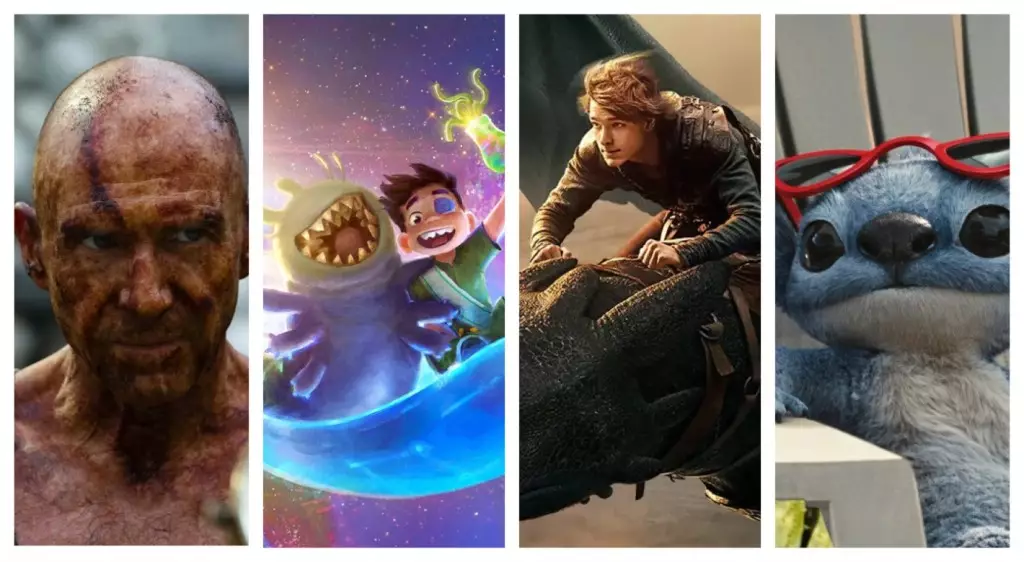In an era where cinema struggles to redefine itself, the arrival of Danny Boyle’s “28 Years Later” as a spiraling force at the box office is nothing short of exhilarating. The film has set a benchmark by pulling in an estimated $60 million globally upon its release, with an evenly split contribution of $30 million from the domestic and international markets. This performance surpasses initial estimations, showcasing not just audience interest, but also an inherent longing for thought-provoking and engaging narratives that challenge the mundane offerings of cookie-cutter films.
While some may herald this success as merely another weekend win in the horror genre, it signals a profound shift in audience preferences. Unlike its horror franchise successors like “A Quiet Place: Part II” or “Evil Dead Rise,” both of which barely managed to maintain their trajectory, “28 Years Later” has resonated with fans by combining poignant storytelling with suspenseful horror elements. As a result, it offers a vision far removed from the usual blood and gore, positioning itself as a serious contender in a genre often snubbed by critical lenses.
Geography as a Class Canvas: The Global Pulse
Taking a closer look at geographical reception, the film painted a vivid picture of its international appeal. Debuting at No. 1 in the UK with $6.4 million, it’s evident that the regional tastes align favorably with the melancholic yet thrilling plot. In Mexico, a $2.7 million opening signals substantial interest from audiences who are thirsting for new narratives. Even in the arid Middle East, “28 Years Later” saw a promising $1.8 million take, reflecting a global resonance that transcends cultural barriers.
In stark contrast, the opposite release of Pixar’s “Elio” stumbled out of the gate, garnering only $35 million globally. This stark disparity sheds light on a grim aspect of the animated film industry—the over-reliance on tried-and-true formulas. “Elio’s” opening illustrates a gap in audience engagement that impacts box office draw, one which even Disney’s marketing prowess couldn’t bridge. With overseas numbers failing to meet expectations, it makes one question the efficacy of traditional animated storytelling in today’s world, particularly against a backdrop of increasingly sophisticated audiences.
Animated Narratives: Where’s the Depth?
The underwhelming debut of “Elio” further underscores a trend that should have studios both concerned and introspective. In a world where thoughts on deeper societal issues and emotional complexities are rising, it seems animated films are failing to connect. The industry needs to step out of its comfort zone and realize that storytelling should evolve, not remain stagnant. The success of “28 Years Later” should be a wake-up call—a reminder that audiences crave substance over superficiality.
It raises an important question: Are animation studios simply rehashing old templates, luring in families with familiar characters while neglecting richer narratives? Children are smarter than ever; they engage with stories differently. Disney needs to rethink its approach or risk alienating a young, discerning audience poised to seek something more rewarding from its cinematic experiences. The monumental success of films like “28 Years Later” could pave the way for an invigorating shift in how narratives are delivered across all genres.
The Road Ahead: Navigating Future Successes
Staring into the future of film, we may find that audiences are not just assemblages of demographics but rather thinkers and critics in their own right. The emergence of films like “28 Years Later” teaches a vital lesson: bold, original storytelling is not merely a desirable trait; it is integral for survival in the cutthroat landscape of modern cinema.
As the box office reflects the desires and demands of the public, producers and studios must pay heed. Future endeavors should not only focus on financial returns but also consider the long-term impact of the stories we choose to tell. In a time when distractions abound, this is the call to arms—dare to unravel complex themes, dare to provoke thought, and above all, dare to make the audience remember why they fell in love with the movies in the first place.

